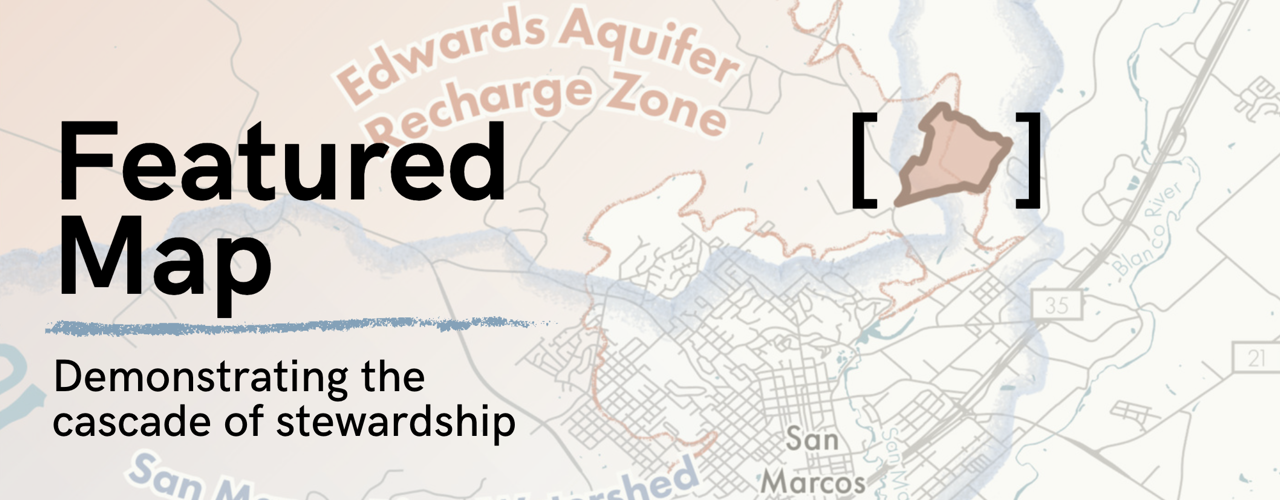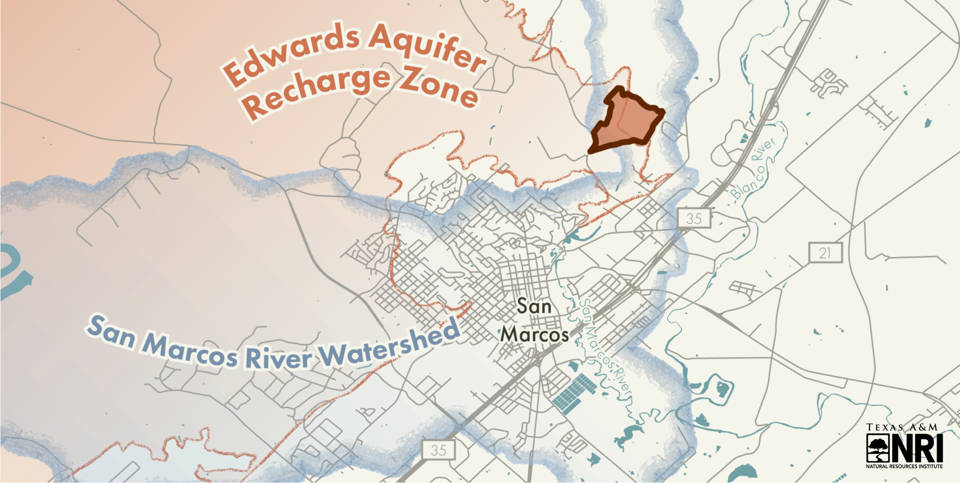

Featured Map: Demonstrating the cascade of stewardship
In areas with dense impervious surface, such as the city of San Marcos, conserved open-space like the Dreamcatcher Ranch (outlined in maroon), play an important role in the quantity of water recharged into the Edwards Aquifer, along with contributing to higher water quality and species habitat.
Water is a cornerstone in supporting Texas’ rich array of landscapes, burgeoning populations and prosperous economy. Managing and regulating this valuable resource to ensure long-term, sustainable use is a top priority for state and local planners—however, it quickly becomes a delicate balance with consideration to ecological processes, natural disasters and general land/water ownership rights.
Former President Lyndon B. Johnson once said, “Saving the water and the soil must start where the first raindrop falls.” In Texas, 82% of the state’s landmass is classified as open space, and falls under the designation of privately-owned working lands, entrusting the majority of land (and everything underneath it, such as groundwater) management responsibilities in the hands of landowners. Employing strategies that safeguard working lands from future development and incentivize best management practices are key in protecting ecological benefits for all residents alike.
Our latest Featured Map comes from a recent study by NRI, in collaboration with the Texas Water Resources Institute and Texas Land Trust Council, which examines the Texas Farm and Ranch Lands Conservation Program—a state-funded program that purchases development rights from interested and willing landowners through agricultural conservation easements. The map highlights the Dreamcatcher Ranch, located just half a mile from San Marcos city limits; situated in Hays County, one of the fastest-growing areas in Texas.
Geographically, the ranch also falls within the Balcones Escarpment, an environmentally sensitive area that influences the water quality and quantity of the San Marcos Springs and the Edwards Aquifer Recharge Zone, feeding into many important water bodies on which residents in Central Texas from Austin to San Antonio depend. The waterways fed via this ranch provide critical habitat for multiple endangered aquatic species, such as the Texas blind salamander (Eurycea rathbuni). Very quickly we start to recognize how stewarding one patch of private land develops into this successional cascade of benefits building one after another well beyond one piece of land.
Check out the full report to learn more about the perpetual ecological and economic benefits these properties provide to the Texas residents.
//
The Texas A&M Natural Resources Institute grants permission for authors, readers and third parties to reproduce and republish materials from its blogs, publications and online products through permission requests to NRI at nri@tamu.edu. This includes the use of figures, maps, photography and video media. If you have questions about permissions, please contact Brittany Wegner.
Learn More
Texas Land Trends
Informing private and public decision-makers about the status and trends of our state’s working lands


 Edwards Aquifer Recharge Zone and the Dreamcatcher Ranch
Edwards Aquifer Recharge Zone and the Dreamcatcher Ranch




